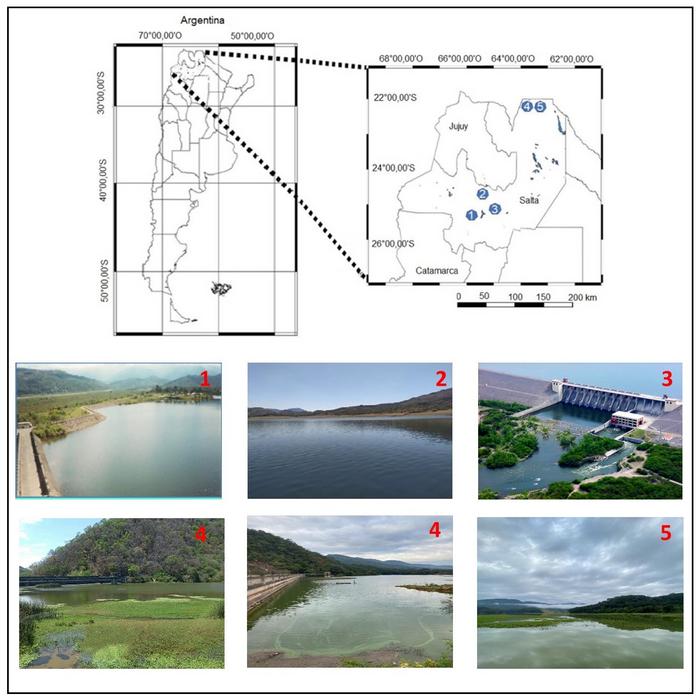Harmful algal blooms (HABs), characterized by the proliferation of detrimental algae and cyanobacteria, occur worldwide. HABs include any event causing adverse effects on human health, socioeconomic interests, or aquatic systems. The consequences of HABs are far-reaching, ranging from the production of potentially harmful or lethal toxins to the creation of hypoxic or anoxic zones, elevated water treatment costs, and a decline in water body quality and usability.

Credit: Alvarez Dalinger, Florencia, and Borja, Claudia
Harmful algal blooms (HABs), characterized by the proliferation of detrimental algae and cyanobacteria, occur worldwide. HABs include any event causing adverse effects on human health, socioeconomic interests, or aquatic systems. The consequences of HABs are far-reaching, ranging from the production of potentially harmful or lethal toxins to the creation of hypoxic or anoxic zones, elevated water treatment costs, and a decline in water body quality and usability.
In a new study published in the KeAi journal Water Biology and Security, a team of researchers in Argentina reported observed different patterns for cyanobacteria and dinoflagellate blooms in reservoirs located in Salta, a province in the north of the country.
“Our laboratory is the only one conducting this type of analysis in the province of Salta,” says Florencia Soledad Alvarez Dalinger, first and co-corresponding author of the study. “We came across numerous results accumulated over the past 15 years that had not been published, and we believed it would be valuable to compile and highlight them.”
The team examined massive algae and cyanobacteria blooms in the region across five reservoirs, of which two are sources for drinking water. The researchers identified cyanotoxins using a new kit developed by CONICET (Buenos Aires).
The kit allowed us to conduct simple and cost-effective determinations. Moreover, our involvement in these quantifications contributed to validating the kit, which proved highly sensitive and serves as a valuable tool for continued long-term sampling,” adds Dalinger.
The team found that in recent years, cyanobacteria blooms have become more intense, particularly in the reservoirs located in the warmest areas of the region. Additionally, positive records of cyanotoxins were observed only in the last four years of the period.
“Previously, such results had not been reported in our province, although they had been documented in other bodies of water in Argentina,” says Dalinger. “This suggests a significant discrepancy in the data and an underestimation of the real scope of the problem.”
The team highlights the challenges they face in conducting this study, including the high costs of the kits and reagents, as well as the fact that their laboratory is composed of mainly early-career female researchers.
###
Contact the author: Alvarez Dalinger, Florencia Soledad, [email protected]
The publisher KeAi was established by Elsevier and China Science Publishing & Media Ltd to unfold quality research globally. In 2013, our focus shifted to open access publishing. We now proudly publish more than 100 world-class, open access, English language journals, spanning all scientific disciplines. Many of these are titles we publish in partnership with prestigious societies and academic institutions, such as the National Natural Science Foundation of China (NSFC).
Journal
Water Biology and Security
DOI
10.1016/j.watbs.2023.100232
Method of Research
Case study
Subject of Research
Cells
Article Title
Bloom-forming cyanobacteria and dinoflagellates in five Argentinian reservoirs: Multi-year sampling
COI Statement
The authors declare that they have no known competing financial interests or personal relationships that could have appeared to influence the work reported in this paper.




